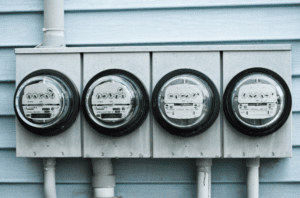It’s Game Time!
One of the most anticipated sports events is The Super Bowl. Ever since the year 1967, this has been a yearly game event of the National Football League. Prior to that it was called the AFL-NFL World Championship Game. At present, the Super Bowl takes place on the second Sunday in February. The Kansas City Chiefs (11W – 6L) and San Francisco 49ers (12W – 5L) are facing off against each other in Super Bowl LVIII.
Where Will Super Bowl LVIII Take Place?
The 2024 Super Bowl will take place at the impressive Allegiant Stadium in Las Vegas, Nevada. Allegiant Stadium opened in July of 2020.
For Super Bowl LVIII, Allegiant Stadium’s capacity will increase from 65,000 to 70,000 people. According to its website, Allegiant Stadium is 1.8 million square feet. It is located on 62 acres, and it’s just off the Las Vegas Strip behind the Mandalay Bay Beach hotel.
Allegiant Stadium is the home field of the Las Vegas Raiders and the University of Nevada, Las Vegas (UNLV) Rebels college football team.
Allegiant Stadium and Environmental Impact
One of the highlights of the modern stadium is its 85 foot tall torch that houses a flame in honor of Al Davis, the late longtime owner of the Raiders. In 2019, it was reported that the torch was to be the largest 3D printed object in the world. The torch sits in the north endzone right in front of large curtain like side windows looking out onto the Las Vegas strip.
According to Allegiant Stadium’s website, the building also boasts energy efficient lighting fixtures and controls, heating and cooling systems, variable speed fans, escalators, and air distribution systems.
Allegiant stadium cost $1.9 billion dollars and construction took place from 2017-2020. It was designed by MANICA Architecture and was designed after the proposed, but never built, Carson Stadium which would’ve hosted the Chargers and the Raiders in Carson, California.
One of the most prominent energy efficient features of the Stadium is its roof. The roof is composed of ETFE (Ethylenetetrafluorethylene) which provides benefits of climate adaptability, insulation performance, self-cleaning, a long lifespan, and is a recyclable material.
The Stadium uses roll-in natural Bermuda grass, similar to what the Cardinals use in their stadium in Glendale, Arizona. Allegiant stadium also has an artificial turf field, which is primarily used for college football games because UNLV prefers to play on the artificial surface.
Having a grass field in the middle of the desert requires a lot of water and Allegiant Stadium is one of the most water efficient stadiums in the country. According to Allegiant Stadium’s website, an average of 535 million gallons of water are saved due to the installation of smart water meters, water efficient fixtures, and water efficient external landscaping.
How Much Electricity does one Super Bowl event consume?
According to experts, lighting up an area as big as the Allegiant Stadium takes up to 10 megawatts. One megawatt is equivalent to 1,000,000 watts. The Super Bowl game takes about 5 hours or more, which means that 50 megawatt hours would be consumed.
At the height of the NFL’s energy use, the league stepped in to start implementing a new green initiative that would help lower the league’s overall electricity consumption and the carbon footprint of these massive professional stadiums. Many of the league’s biggest stadiums have taken the challenge seriously and started implementing new strategies to reduce their overall energy use.
The Cost of the Half Time Show
Last year, in Super Bowl LVII, more than $10 Million was spent for the half time show starring Rihanna. Aside from the commercials, and of course the football, half time shows are also one of the most anticipated parts of the event. This is because it features performances from bands, artists, as well as other grand preparations that surely give an impression of an all-out concert.
For a 12-15 segment in a national event, organizers of the Super Bowl spend more than $10 million. Breakdowns of expenditures involve paying for the extravagant stage setup, fireworks, lighting, as well as other necessities of the event.
This year’s half time show will feature Usher.
How many people watch the Super Bowl?
An estimated number of 30 million households watch the Super Bowl worldwide. This includes watching the game through television, cellphones, and other devices that have access to the internet and live streaming of the Super Bowl.
This means televisions and devices consume about 38.5 million kilowatt hours of power. Moreover, there is an additional 37.5 million kilowatt hours for lighting. This brings the total energy and electricity consumed to watch the Super Bowl to 76 GWh.
As for the cost of consuming this much energy, the average kilowatt hour price across the United States is about $0.16, which would result in a total combined bill of about $12,000,000 when it comes to just household energy consumption alone.
Super Bowl of the Future
While the Super Bowl consumes an overwhelming amount of energy and electricity, there are modern ways and solutions implemented at present to reduce that amount. This includes using LED lights, utilizing solar energy, as well as limiting the number of watts spent per day. There are various ways that consumption of energy and electricity can be decreased without sacrificing the enjoyment of watching the big game, and it’s encouraging that more and more companies increasingly embrace several cost efficient and energy efficient solutions.
The new Allegiant stadium is an amazing example of what the future holds for entertainment and multipurpose buildings. Predictably, it will be the most advanced sports venue for the next decade. As such, it will serve as a source inspiration for the future of breakthrough, innovation, and transformation in the energy industry.
Have a thrilling Super Bowl this weekend!





